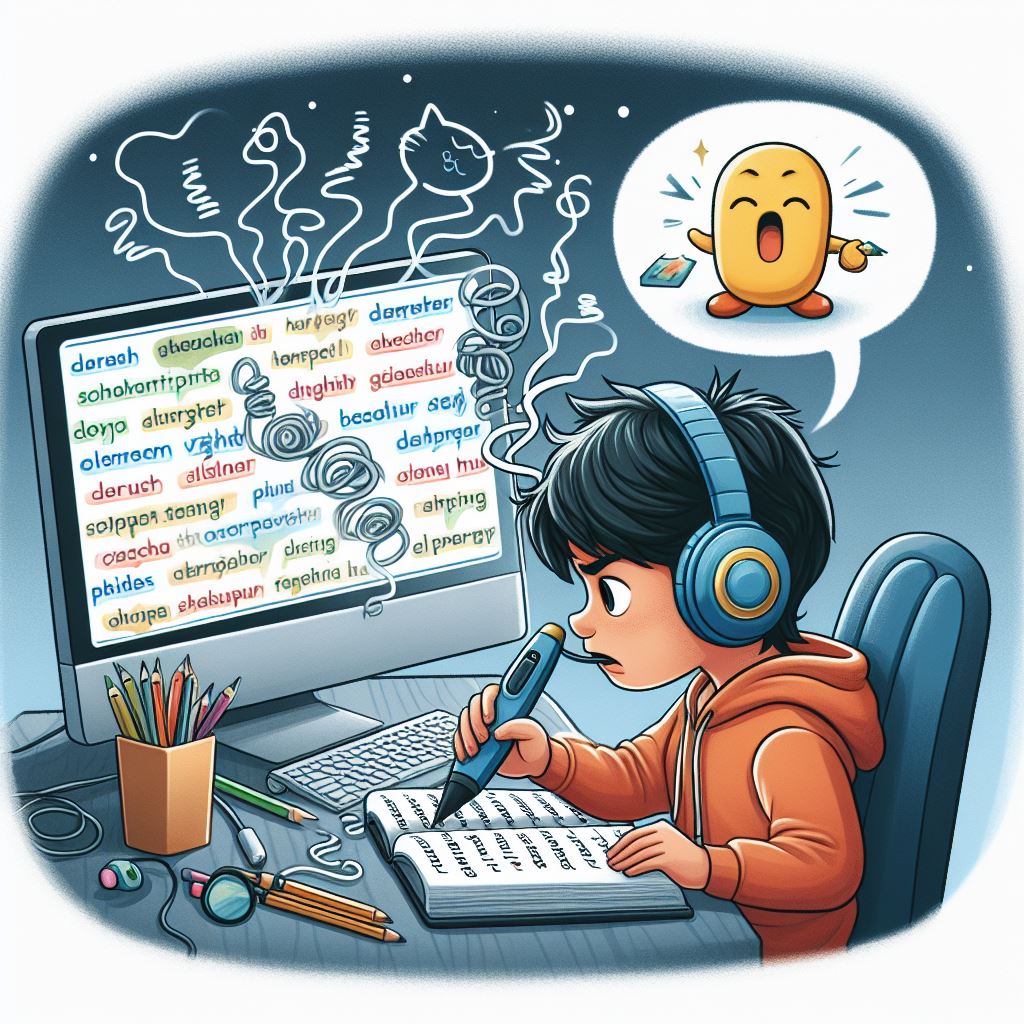Introduction
Dyslexia and dysgraphia are two learning disorders that often go hand-in-hand, affecting individuals’ abilities to read, write, and process language. While they have distinct characteristics, their impact can overlap, making it essential to explore these conditions in tandem.
Understanding Dyslexia: At its core, dyslexia is a neurological condition that hampers reading and spelling abilities. Imagine reading a book where the letters constantly dance, switch places, or seem to elude your comprehension. For individuals with dyslexia, decoding written words becomes a Herculean task, leading to frustration and self-doubt.
The dyslexic brain, much like a GPS navigating a complex terrain, experiences difficulty processing phonological information. This difficulty stems from the brain’s challenge in recognizing and manipulating the sounds of spoken language, creating a significant roadblock on the journey to fluent reading.
Connecting Dysgraphia
On the other side of the learning spectrum, dysgraphia manifests as a writing disorder. Picture attempting to write a coherent sentence, only to find that the letters on the page appear disjointed, misshapen, or altogether illegible. Dysgraphia interferes with the motor skills needed for handwriting and the ability to translate thoughts into written language.
Dysgraphia’s impact extends beyond the act of writing; it infiltrates the entire writing process, from organizing ideas to expressing them coherently on paper. Like an artist struggling with a malfunctioning paintbrush, those with dysgraphia find themselves wrestling with the tools essential for conveying their thoughts.
Overlap and Shared Struggles
Although dyslexia and dysgraphia target different aspects of learning, they often coexist, creating a unique set of challenges for individuals. Consider a duo navigating a dense forest: dyslexia as the unreliable compass, and dysgraphia as the tangled vines obstructing the path. Together, these disorders compound the difficulties in grasping language and academic concepts.
Transitional Struggles
Because dyslexia and dysgraphia frequently co-occur, transitions between reading and writing activities can be particularly daunting. Picture transitioning from a smooth, paved road to a bumpy, winding trail without warning. The abrupt switch in cognitive demands can lead to frustration, anxiety, and a sense of being lost in the learning landscape.
Support and Interventions
Fortunately, with appropriate interventions, individuals with dyslexia and dysgraphia can develop strategies to navigate the challenges effectively. It’s akin to providing a customized map that highlights alternative routes and offers support through assistive technologies, specialized teaching methods, and accommodations tailored to individual needs.
Conclusion
In unraveling the complexities of dyslexia and dysgraphia, it becomes evident that these learning disorders are intertwined, presenting unique obstacles on the journey to literacy. By recognizing the shared struggles and implementing targeted interventions, we can empower individuals to overcome these challenges and find their way in the vast landscape of learning.
Here are additional examples of interventions for individuals with dyslexia and dysgraphia:
Multisensory Instruction
- Metaphor: Just as a chef uses multiple senses to enhance the flavor of a dish, multisensory instruction engages visual, auditory, and tactile modalities to reinforce learning. For dyslexia, this could involve activities that combine seeing, hearing, and feeling letters and words simultaneously.
Assistive Technology:
- Metaphor: Think of a technological assistant as a reliable guide through the learning landscape. Speech-to-text software, audiobooks, and word prediction tools act as digital companions, helping individuals bypass the challenges posed by dyslexia and dysgraphia.
Structured Literacy Programs:
- Metaphor: Similar to constructing a sturdy building, structured literacy programs provide a solid foundation for language skills. These programs break down language concepts into manageable parts, ensuring a systematic and sequential approach to learning.
Graphic Organizers:
- Metaphor: Picture a well-organized suitcase for a trip; graphic organizers serve as mental luggage, helping individuals pack and unpack their thoughts systematically. These visual tools aid in organizing ideas, improving the writing process for those with dysgraphia.
Occupational Therapy:
- Metaphor: Envision an architect fine-tuning the blueprint of a structure; occupational therapy refines motor skills essential for writing. Through exercises targeting hand-eye coordination and fine motor control, individuals with dysgraphia can enhance their writing abilities.
Peer-Assisted Learning:
- Metaphor: Like fellow travelers exchanging tips along a journey, peer-assisted learning fosters collaboration. Pairing individuals with dyslexia or dysgraphia with supportive peers encourages shared learning experiences and can alleviate the sense of isolation.
Text-to-Speech Technology:
- Metaphor: Consider a personal reading companion whispering words of encouragement; text-to-speech technology transforms written text into spoken words. This intervention assists individuals with dyslexia in decoding and comprehending written content more effectively.
Mindfulness and Relaxation Techniques:
- Metaphor: Just as a calm sea reflects a clear sky, mindfulness techniques create mental clarity. These strategies, such as deep breathing or meditation, help manage the stress and anxiety often associated with learning challenges, promoting a conducive environment for learning.
Individualized Education Plans (IEPs):
- Metaphor: Tailored like a bespoke suit, IEPs are personalized plans designed to meet the unique needs of each learner. By outlining specific goals, accommodations, and support mechanisms, IEPs provide a roadmap for academic success.
Executive Functioning Skills Training:
- Metaphor: Compare executive functioning skills to the conductor of an orchestra; these skills coordinate various mental processes. Training in areas like time management, organization, and task initiation assists individuals in overcoming challenges associated with dyslexia and dysgraphia.
These interventions, metaphorically described, serve as crucial tools in empowering individuals with dyslexia and dysgraphia, helping them navigate the educational landscape more effectively.
